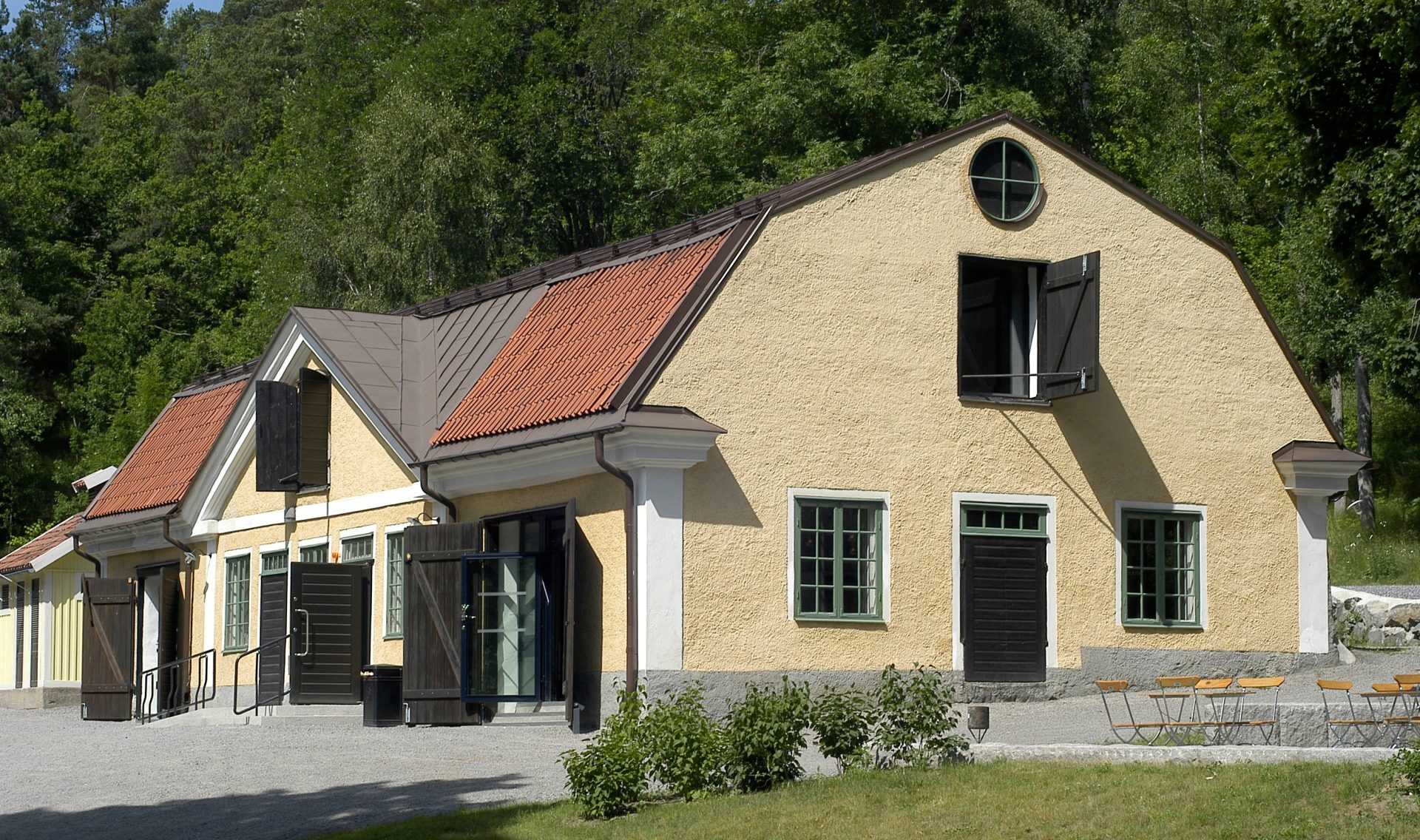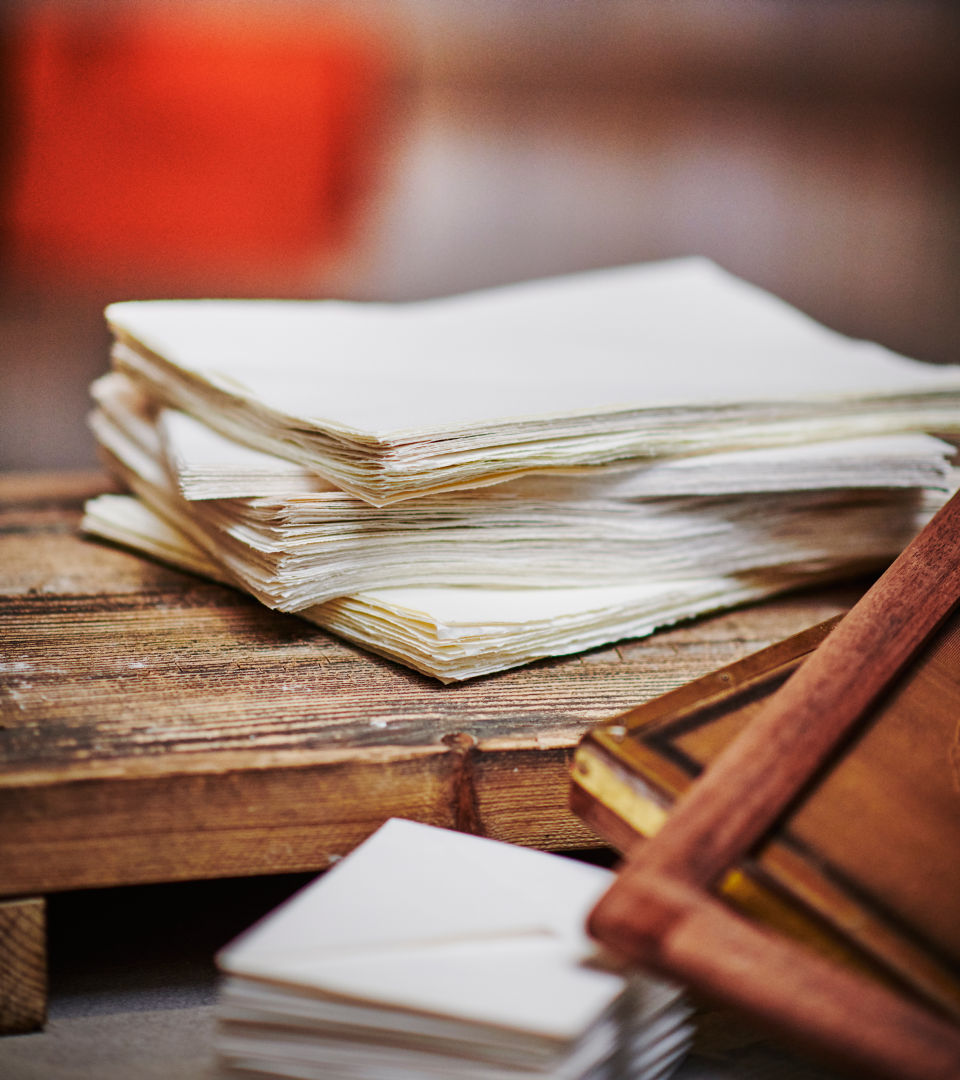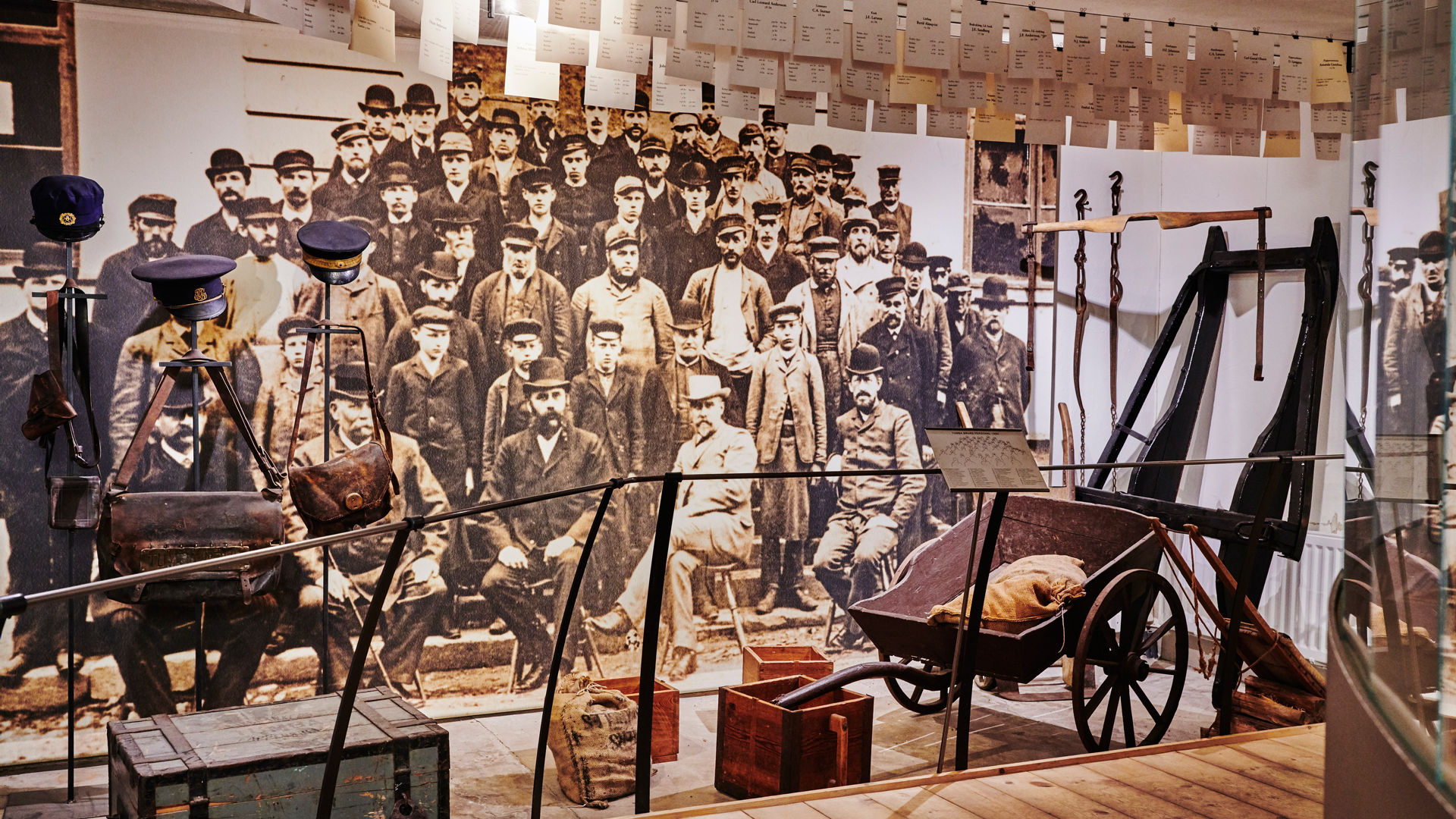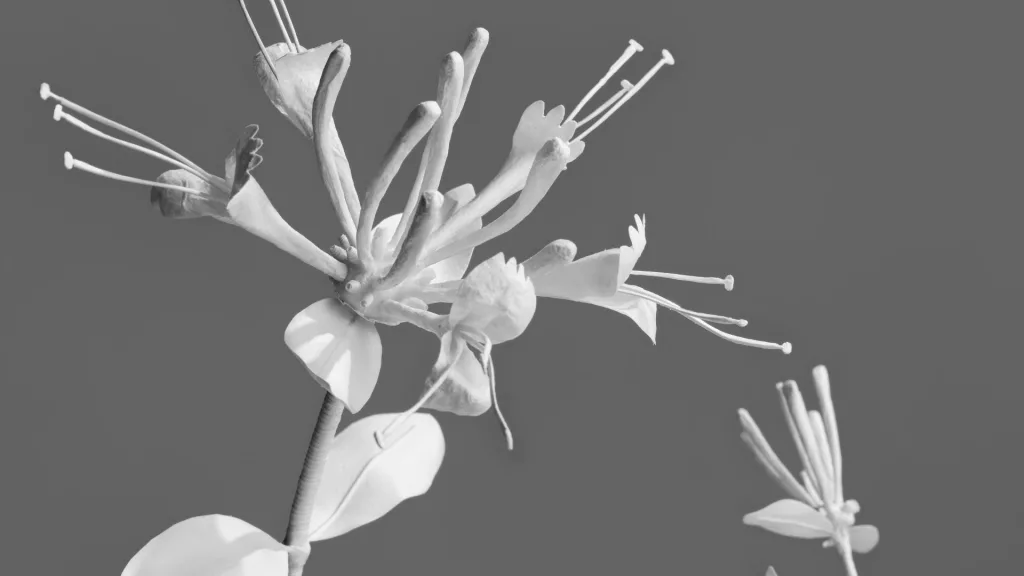
Honeysuckle (Lonicera periclymenum), sculpture in handmade paper created by Cecilia Levy. Film: Helena Bonnevier, Tumba Paper Mill Museum/SHM.
Flores pretiosi - flowers of value
The material in the works is the same cotton pulp used for the production of banknote paper at Tumba Mill.
Cecilia Levy's flower sculptures capture the timelessness of nature and pose the question: Can the value of nature truly be measured in money? Is it the paper itself, the nature it comes from, or what is printed on the paper that creates the value?
During my experiments with handmade paper, I began to reflect on what we perceive as valuable.
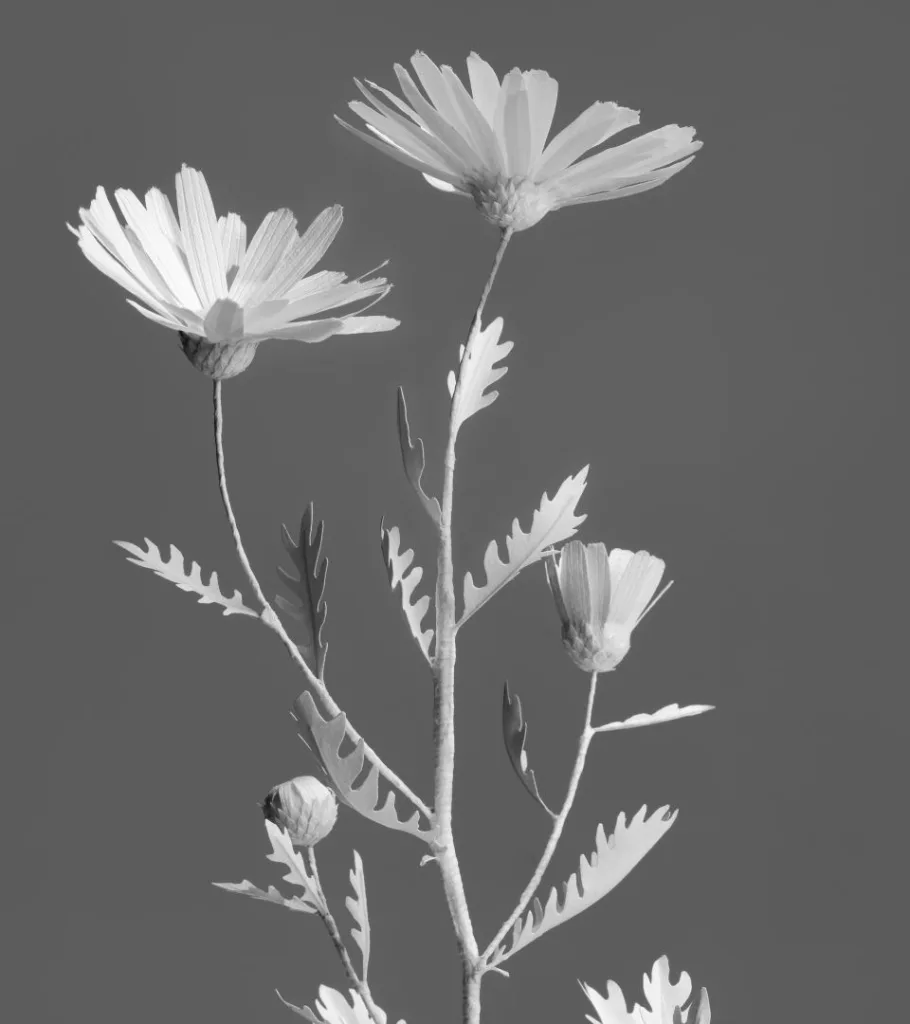
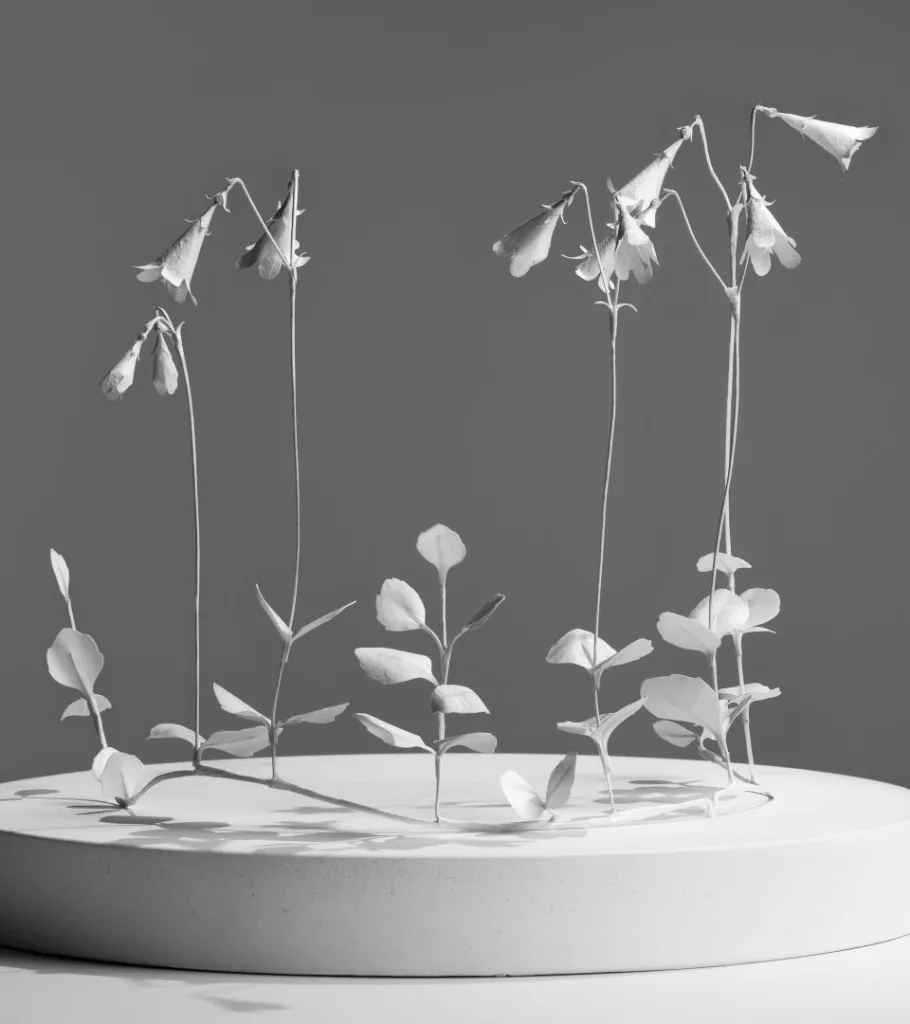
Left: Oxeye daisy (Leucanthemum vulgare). Right: Twinflower (Linnaea borealis). Sculptures in handmade paper created by Cecilia Levy. Photo: Helena Bonnevier, Tumba Paaper Mill Museum/SHM.
About the artist
Cecilia Levy began working three-dimensionally with paper and papier-mâché in 2009. She is trained as a graphic designer and bookbinder and has exhibited both in Sweden and internationally. Her works are represented in private and public collections, including the National Museum and the Swedish Arts Council. In 2020, her work In Fusion – Contemplation Pieces was nominated for Sweden’s design award, Design S.
In the spring of 2024, Levy completed an artist residency at the Tumba Paper Mill Museum, which resulted in eight newly produced works, now on display to the public in the exhibition Flores pretiosi.
It feels especially exciting that the foundation of the sculptures is the handmade paper that Cecilia created during her artist residency here at the museum in the spring of 2024.
Cecilia Levy, on her process:
As a paper artist, I mainly use old books as material. I get the books from friends and acquaintances or find them at flea markets. The quality of the paper is essential, and visible traces of the passage of time are interesting. The works in this exhibition originated from my handmade papers. During an artistic residency at the Tumba Paper Mill Museum in the spring of 2024, I had the opportunity to work independently in the handmade paper workshop. However, it was more challenging than I had anticipated. The work at the vat must be done with calm movements, methodically, and with focus.
Making handmade paper takes time, and the process cannot be rushed. The repetitive movements and trying to understand with my hands—or really with my entire body—how to achieve a good final result. How little the mold really needs to be moved and tilted for the pulp to distribute evenly over the fine mesh, how much water needs to drain off, and how to shift body weight from side to side when the sheet is couched onto the drying felt. With each new sheet, I tried to fine-tune my technique, but learning a new craft takes a long time. I did, however, experience a small burst of joy on the rare occasions when I managed to produce a perfectly smooth and appropriately thick sheet. Once back in the studio, I began experimenting with my handmade pressed sheets and the papier-mâché technique I usually work with.
Working with handmade paper is quite similar to working with book paper; both react to the moisture in the glue by swelling and contracting as they dry. Book paper consists of wood pulp, while the handmade sheets of cotton linters consist of textile fibers. The main difference is that handmade paper shrinks slightly during drying. If it dries flat, it becomes smooth; if it dries without support, it contracts, resulting in a coarser surface texture. The dry sheets also have a slightly tougher consistency; they are not easy to tear. In a wet state, the cotton paper is flexible but fragile to work with, as it breaks easily. In its dry state, it becomes strong and flexible.
Accessibility
The exhibition is on display in Oxhuset, the museum's main building, with entrance and shop. Oxhuset has two toilets, one of which is accessible, and a changing table. The exhibition is located on the lower floor, and is accessible for both prams and wheelchairs.
